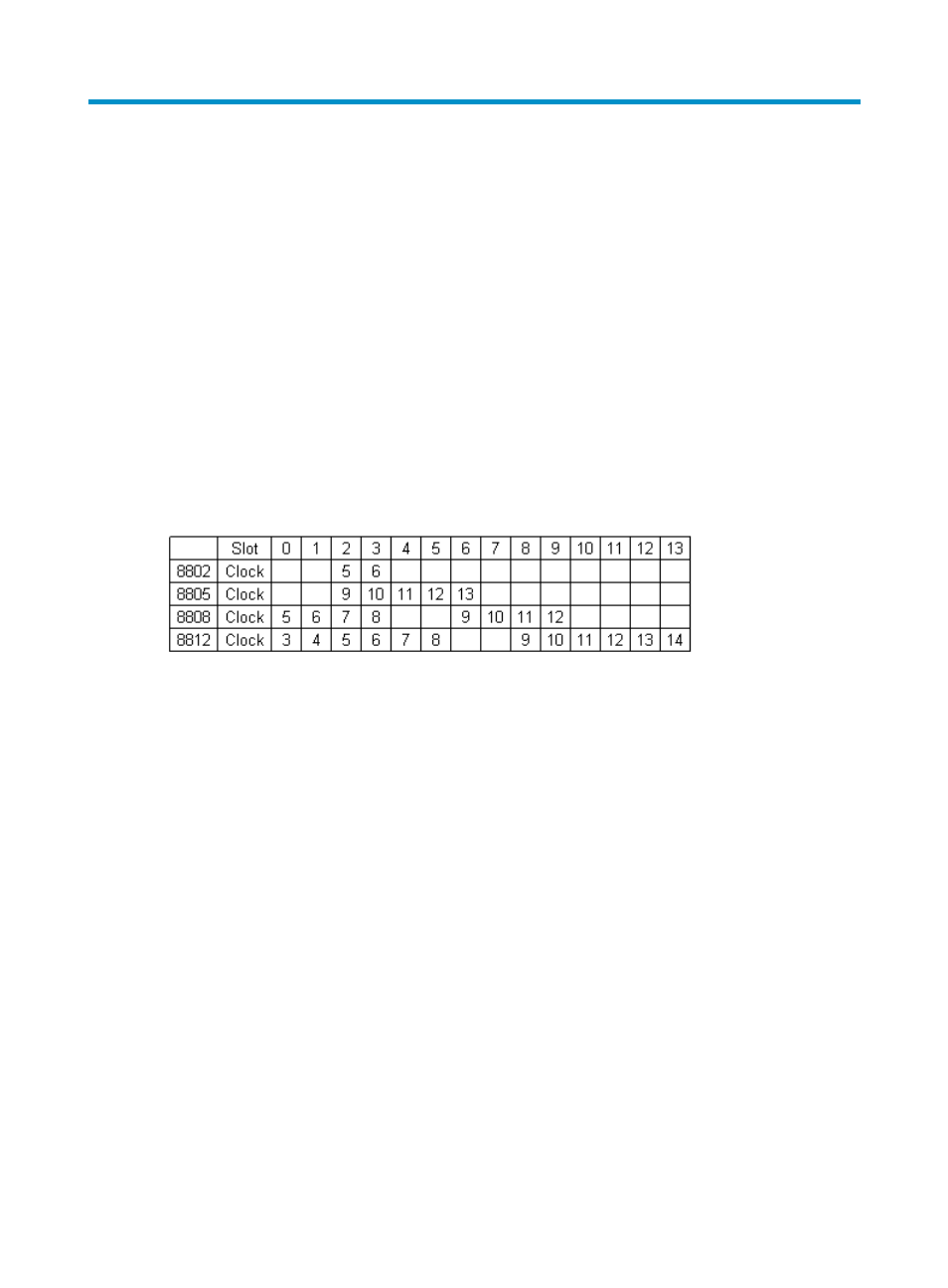Configuring clock monitoring, Clock monitoring module overview, Reference source level – H3C Technologies H3C SR8800 User Manual
Page 95: Priority of the reference source

83
Configuring Clock monitoring
Clock monitoring module overview
Clock monitoring module provides highly-precise, highly-reliable synchronous digital hierarchy (SDH)
line interface 38.88 MHz clock signals for different line processing units (LPUs). It implements such
functions as input clock source automatic selection, software phase-lock, and real-time monitoring of the
clock status of the interface card. The clock monitoring module supports hardware reset of the clock card.
The clock monitoring module supports 14 reference clock sources (referred to as reference source
hereinafter), among which the first and the second are Bits clock sources and the others are line clock
sources. The first and the second reference sources respectively correspond to external interfaces 1 and
2 for receiving clock signals on the active switching and routing processing unit (SRPU).
shows
the reference-slot relationship: On the SR8802, the clock in slot 2 corresponds to the fifth reference
source, and the clock in slot 3 corresponds to the sixth reference source.
Figure 32 Relationship between reference source and slot
Classification of clock sources
Clock sources can be classified into three categories according to different sources of the clock source:
•
Local clock source—38.88 MHz clock signals generated by a crystal oscillator inside the clock
monitoring module.
•
Bits clock source—Clock signals generated by a specific Bits clock device. The signals are sent to
the clock monitoring module through a specific interface on the SRPU (switch and router processing
unit) and then sent to all cards by the clock monitoring module.
•
Line clock source—Provided by the upper level device, whose precision is lower than that of the Bits
clock source. The signals are derived from the specified WAN interface and sent to the clock
monitoring module, which then sends the signals to all cards.
Reference source level
The reference source level is determined by the priority and the synchronization status marker (SSM) level
of the reference source.
Priority of the reference source
You can set a high priority for the reference source with high-precision and high-reliability to make it be
first selected as the clock source.